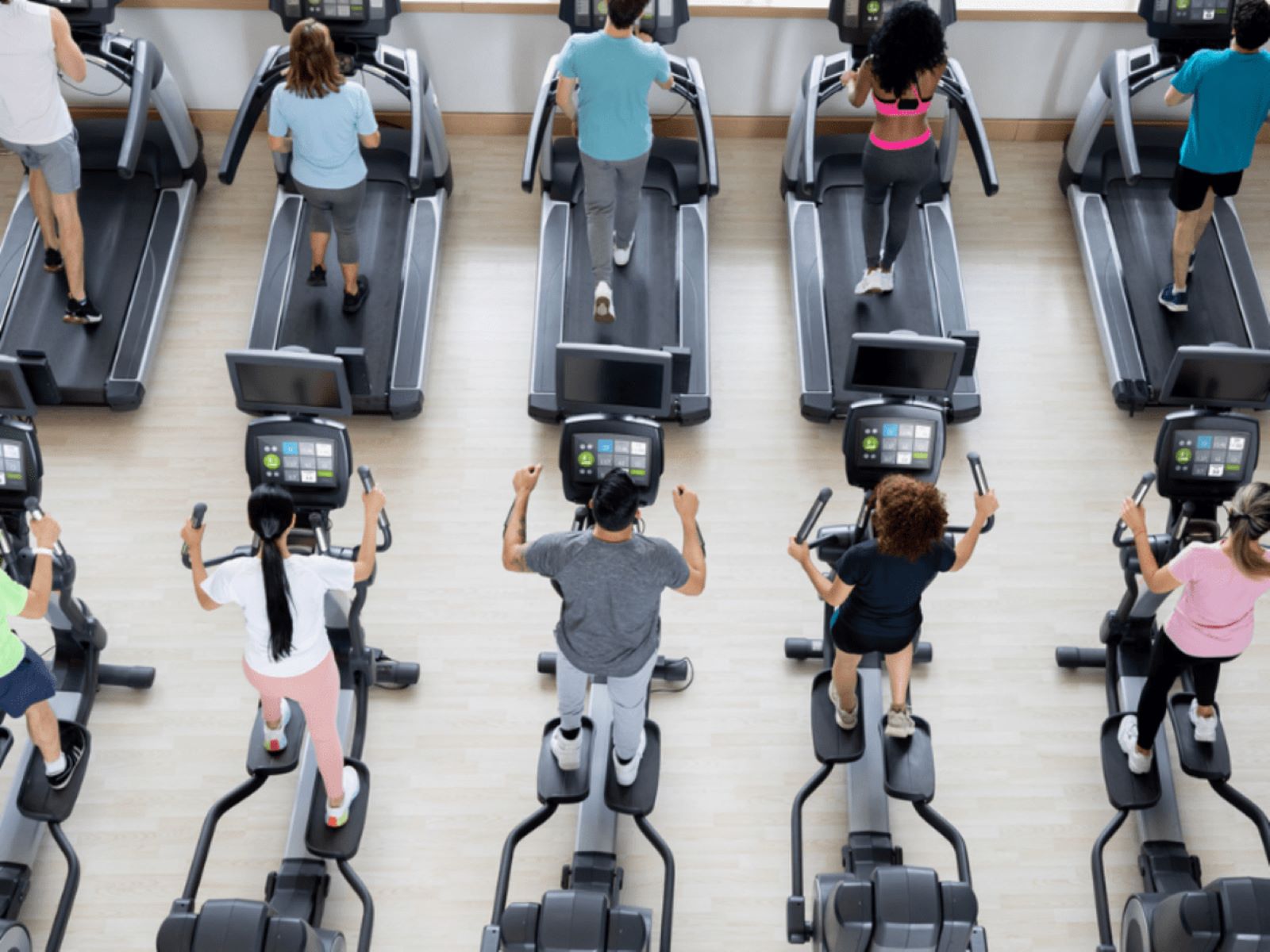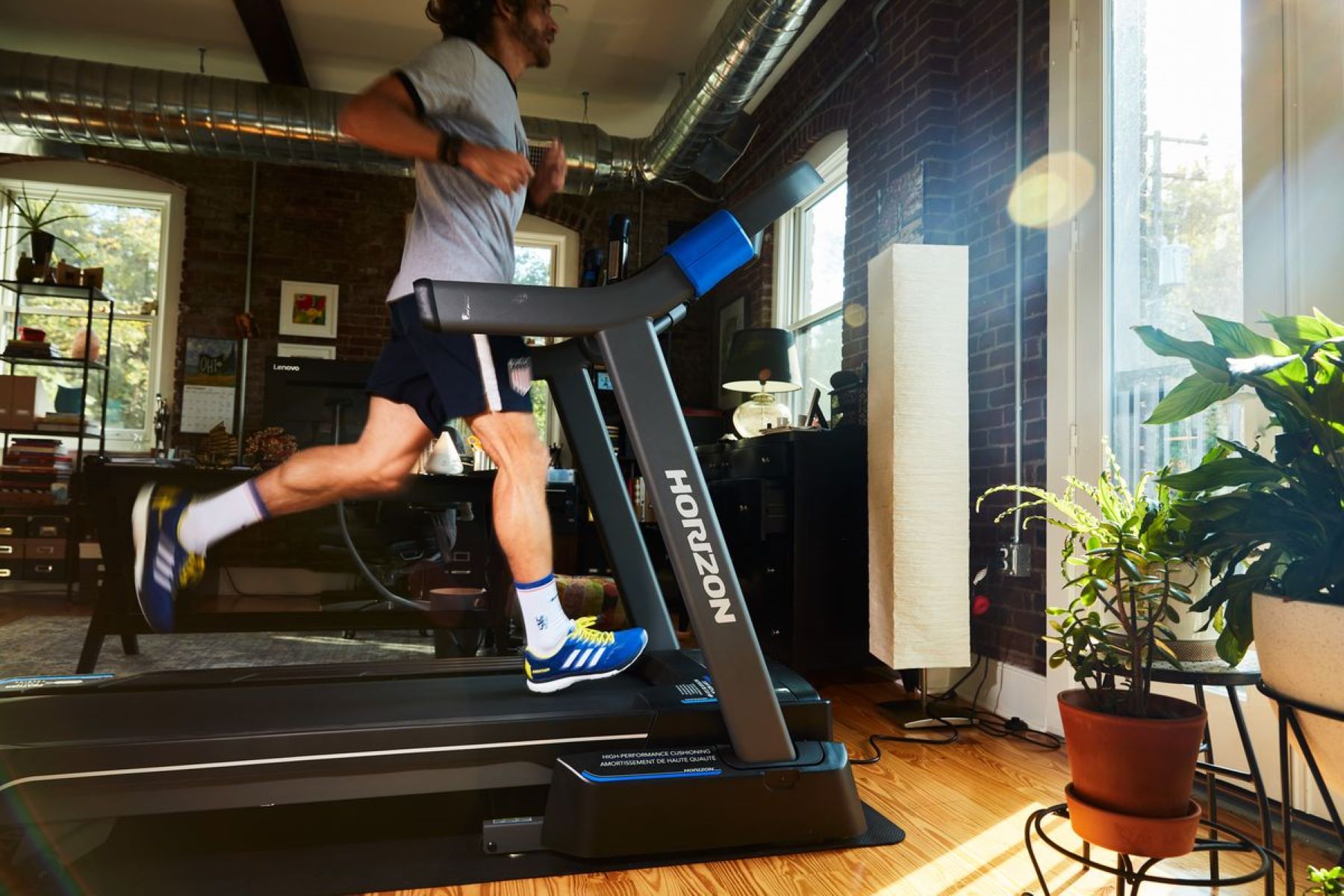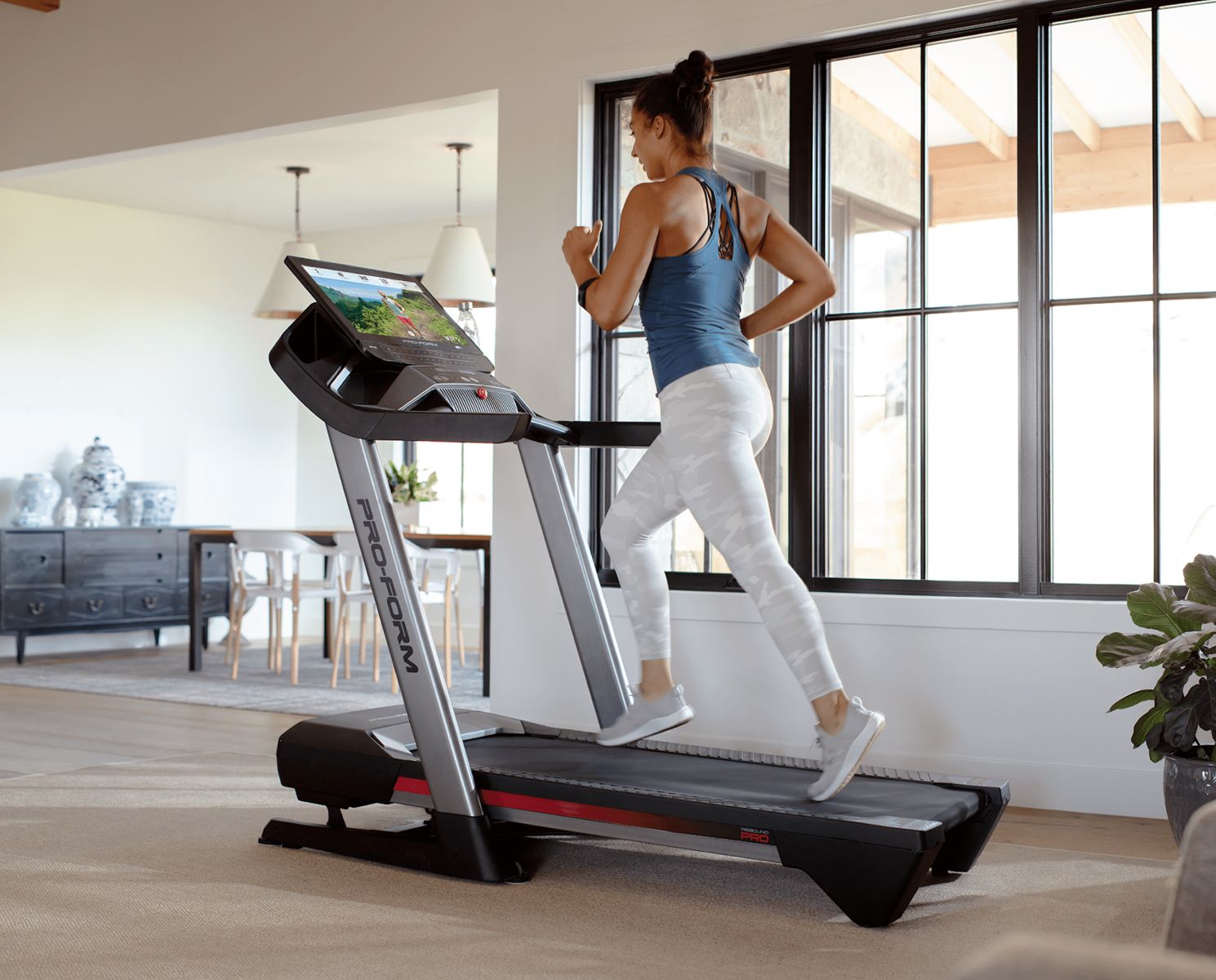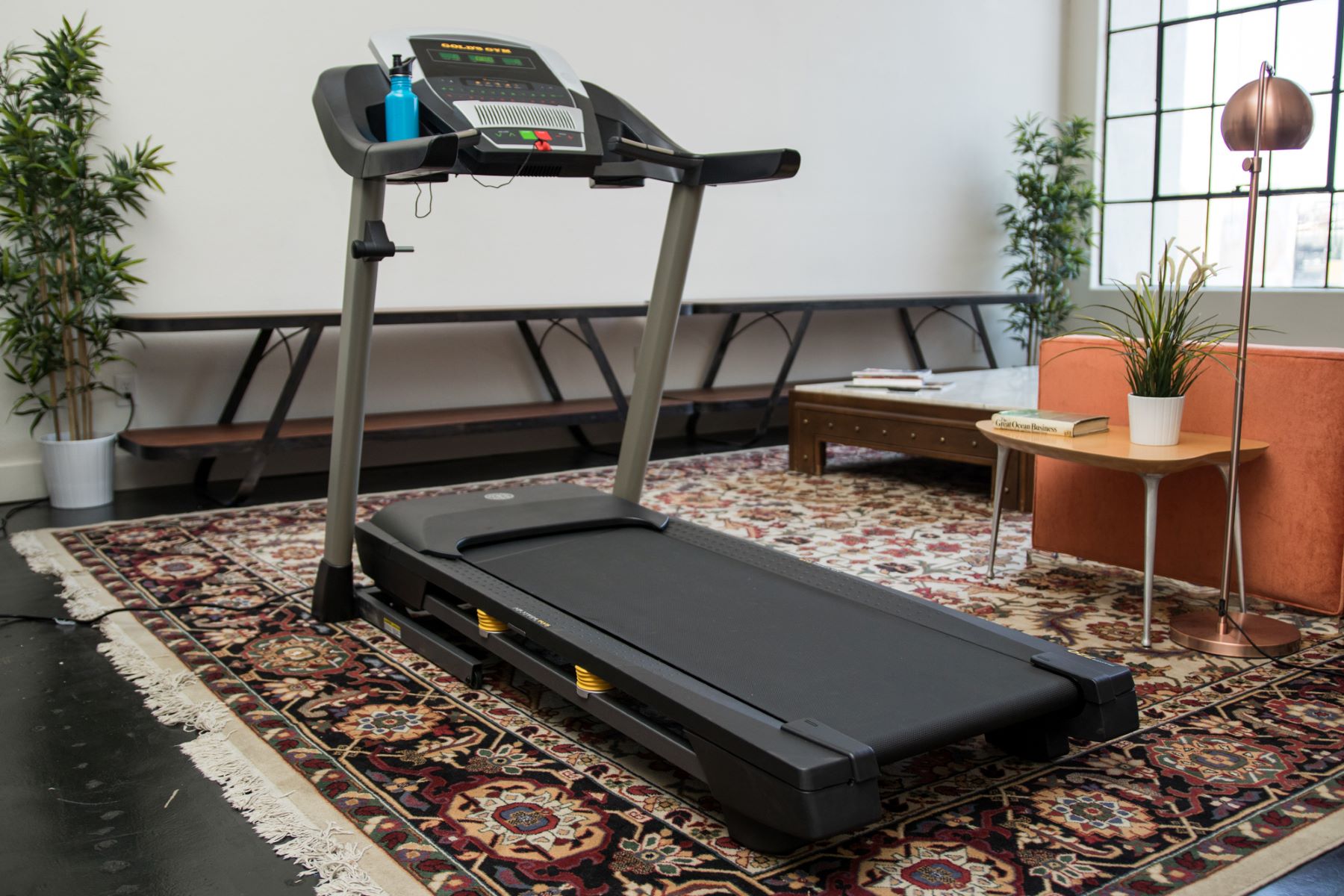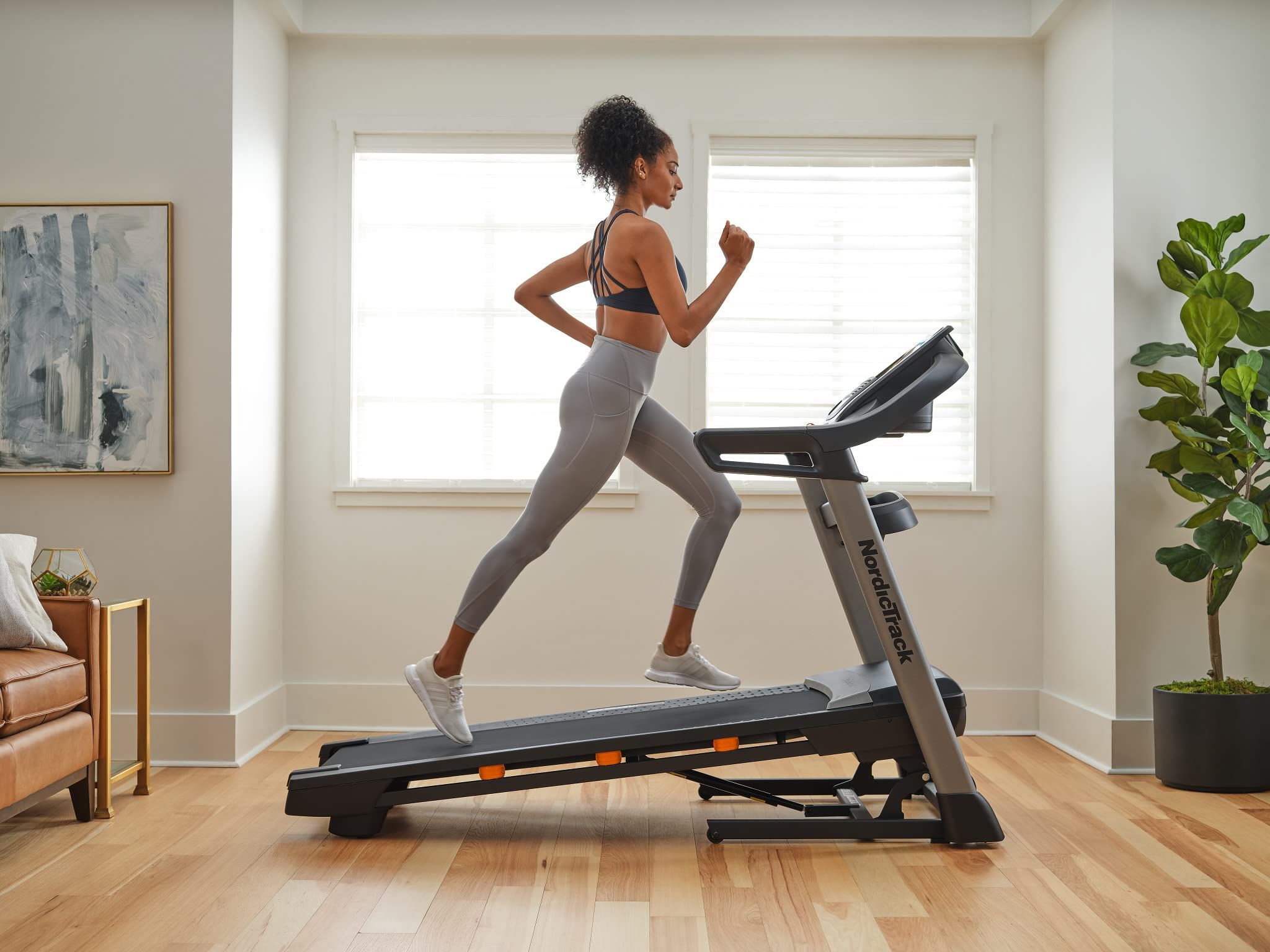Home>Misc>Featured>How Many Calories Do I Burn Walking On A Treadmill
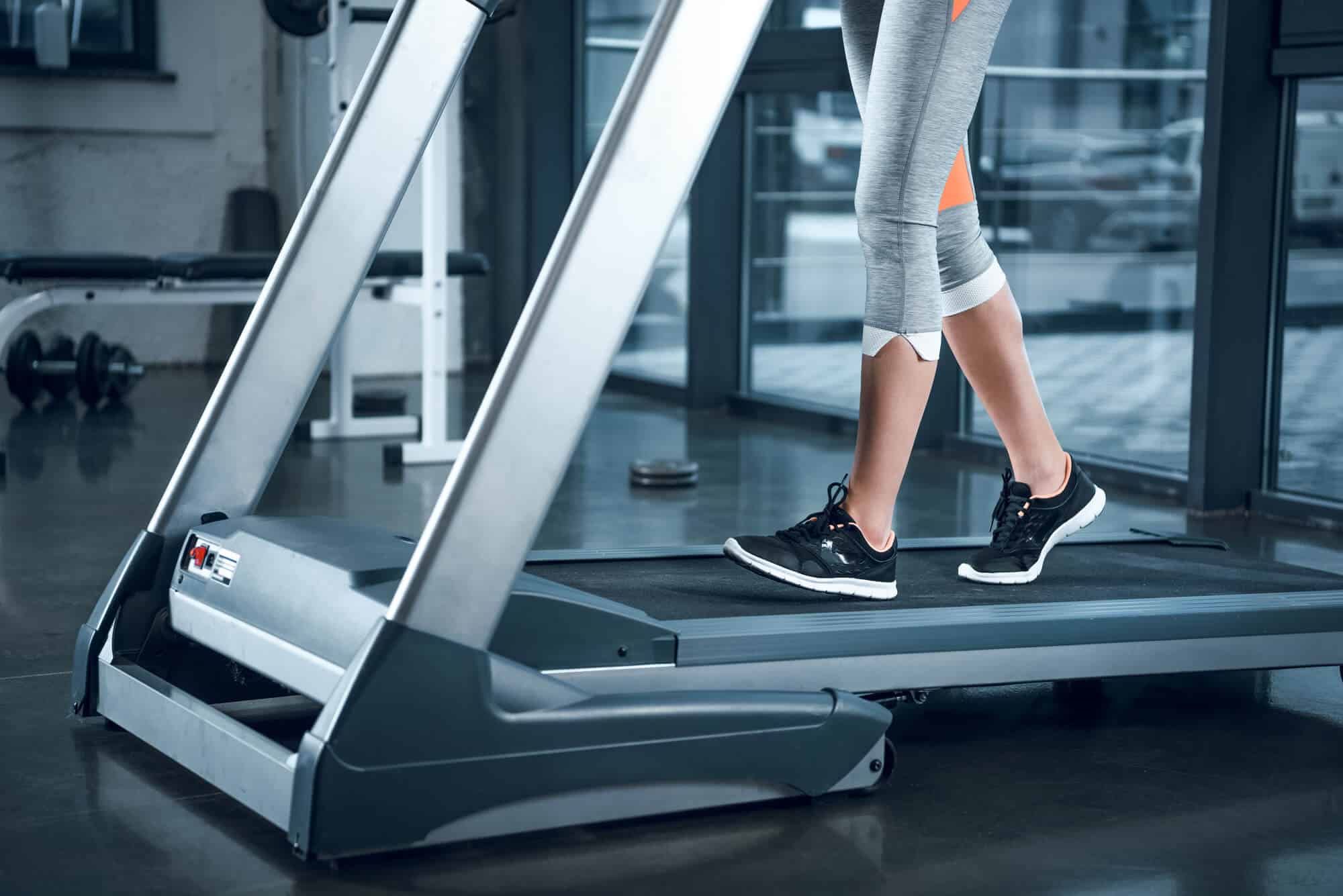

Featured
How Many Calories Do I Burn Walking On A Treadmill
Modified: August 21, 2023
Discover how many calories you can burn by walking on a treadmill. Get featured tips on maximizing your calorie burn and achieving your fitness goals.
Introduction
Welcome to the world of fitness and exercise! Whether you are a seasoned gym-goer or just starting your fitness journey, walking on a treadmill is a great way to improve your cardiovascular health and burn calories. Walking on a treadmill provides a convenient and accessible option for those who are looking to stay active, regardless of the weather or time of day.
Understanding how many calories you burn while walking on a treadmill is essential for setting fitness goals and monitoring your progress. It allows you to make informed decisions about your exercise routine and aids in creating a calorie deficit for weight loss.
In this article, we will explore the factors that affect calorie burn, the benefits of walking on a treadmill, and different methods to calculate the calories burned during your treadmill sessions. Whether you are new to treadmill workouts or looking to amp up your calorie burn, we have got you covered with tips and strategies to maximize your efforts.
So, lace up your sneakers, hop on the treadmill, and let’s dive into the world of calorie burn and walking on a treadmill!
Understanding Calorie Burn
Calorie burn refers to the number of calories your body expends during physical activity. It is influenced by various factors such as your body weight, intensity of the exercise, duration of the activity, and your overall fitness level. Knowing how many calories you burn while walking on a treadmill is crucial for effective weight management and designing a workout routine that aligns with your goals.
Walking is a low-impact exercise that can be easily incorporated into your daily routine. It not only helps in burning calories but also has numerous health benefits such as improving cardiovascular health, strengthening muscles and bones, and boosting mood and energy levels.
The number of calories burned during exercise depends on the intensity of the activity. Intensity is typically measured in terms of METs (Metabolic Equivalent of Task). MET is a unit that represents the energy expenditure of an activity relative to a person’s resting metabolic rate. For example, walking at a brisk pace might have a MET value of 3.5, meaning you are burning 3.5 times your resting metabolic rate during that activity.
It is important to note that calorie burn is not solely determined by the duration of the exercise. While walking for longer periods of time does burn more calories, the intensity of the workout also plays a significant role. A more vigorous pace or incorporating incline settings on the treadmill can increase the calorie burn.
Additionally, your body weight also influences the number of calories burned while walking. The more you weigh, the more calories you are likely to burn. This is because it requires more energy to move a heavier body.
Understanding how calorie burn works can help you tailor your workout routine to achieve your specific goals. Whether you are aiming for weight loss, maintaining your current weight, or simply staying active, having a clear understanding of calorie burn allows you to make informed decisions about your exercise routine.
Now that we have a basic understanding of calorie burn and its factors, let’s explore the benefits of walking on a treadmill and how it can contribute to your overall fitness journey.
Factors Affecting Calorie Burn
While walking on a treadmill is a great way to burn calories, the number of calories burned can vary based on several factors. It’s essential to understand these factors to optimize your treadmill workouts and achieve your fitness goals.
1. Body Weight: Your body weight plays a significant role in determining the number of calories burned during exercise. Generally, the more you weigh, the more energy your body needs to expend to move. Thus, individuals with higher body weight tend to burn more calories while walking on a treadmill.
2. Walking Speed: The intensity at which you walk on a treadmill affects calorie burn. Walking at a faster pace or adding intervals of brisk walking or jogging will increase your heart rate and result in more calorie expenditure. Increasing your speed can help you burn more calories in a shorter period of time.
3. Incline Level: Walking on an incline or using the incline settings on a treadmill can significantly increase calorie burn. When you walk uphill, your muscles have to work harder, and your body burns more calories to generate the required energy. Adding incline to your treadmill workouts can simulate outdoor walking or hiking and provide an additional challenge.
4. Duration of Exercise: The longer you walk, the more calories you will burn. However, keep in mind that intensity is also crucial. It’s better to increase your speed or incline rather than solely relying on extending the duration of your workout. This will help you maximize calorie burn and prevent boredom.
5. Fitness Level: Your fitness level plays a role in calorie burn as well. Individuals who are more fit tend to have a higher resting metabolic rate and burn more calories even at rest. As you become more physically fit, your body becomes more efficient at burning calories during exercise.
6. Age and Gender: Age and gender can also influence calorie burn. Generally, younger individuals tend to have a higher metabolism and may burn more calories during exercise. Men often have a higher muscle mass and, as a result, burn more calories compared to women.
7. Body Composition: The ratio of muscle to fat in your body can impact calorie burn. Muscle is more metabolically active than fat, meaning it burns more calories even at rest. Therefore, individuals with a higher percentage of muscle mass tend to burn more calories during exercise.
By understanding these factors, you can make adjustments to your treadmill workouts to maximize calorie burn and achieve your desired fitness outcomes. In the next section, we will explore the numerous benefits of walking on a treadmill.
Benefits of Walking on a Treadmill
Walking on a treadmill offers a range of benefits that make it an excellent choice for individuals of all fitness levels. Whether you are just starting your fitness journey or looking to maintain an active lifestyle, here are some key benefits of incorporating treadmill walking into your routine:
1. Cardiovascular Health: Walking on a treadmill is a great way to improve your cardiovascular fitness. Regular cardiovascular exercise, such as walking, strengthens your heart, lowers blood pressure, and reduces the risk of heart disease and strokes.
2. Weight Management: Walking on a treadmill can help you manage or lose weight. It is a low-impact exercise that burns calories, promotes fat loss, and can contribute to creating a calorie deficit, which is essential for weight loss.
3. Joint-Friendly: Treadmills offer a cushioned surface that reduces impact on your joints compared to walking on harder surfaces. This makes them an excellent option for individuals with joint issues or those who are recovering from injuries.
4. Convenient and Accessible: One of the biggest advantages of treadmill walking is its convenience. You can walk on a treadmill regardless of the weather or the time of day. Having a treadmill at home or utilizing one at the gym allows you to fit in exercise whenever it suits your schedule.
5. Customizable Workouts: Treadmills offer various settings and features to customize your workouts. You can adjust the speed, incline level, and even incorporate interval training to challenge yourself and keep your workouts exciting and effective.
6. Boosts Mood and Energy Levels: Walking on a treadmill, like any form of exercise, releases endorphins that act as natural mood boosters, reducing stress and anxiety. It also increases energy levels and improves mental focus, making you feel refreshed and revitalized.
7. Strengthens Muscles and Bones: While primarily a cardiovascular exercise, treadmill walking also engages various muscles, including the calves, quadriceps, glutes, and core muscles. This can lead to improved muscle tone and strength. Regular walking on a treadmill can also help in maintaining bone density and reducing the risk of osteoporosis.
8. Social Engagement: If you prefer a more social workout experience, many gyms offer group treadmill classes or walking clubs where you can connect with like-minded individuals and turn your treadmill sessions into a fun and interactive activity.
With these benefits in mind, walking on a treadmill can be a fantastic addition to your fitness routine, providing you with a convenient, effective, and enjoyable way to stay active.
How Many Calories Do You Burn Walking on a Treadmill?
The number of calories you burn while walking on a treadmill depends on several factors, including your body weight, walking speed, incline level, and duration of the exercise. It’s important to remember that calorie burn is individualized, and these numbers can vary from person to person.
On average, a person who weighs around 150 pounds can expect to burn approximately 100 to 200 calories per 30 minutes of walking on a treadmill at a moderate pace (around 3-4 mph) and no incline. Increasing the speed to a brisk pace or walking on an incline can further elevate the calorie burn.
If you weigh more than 150 pounds, you will likely burn more calories while walking on a treadmill. For example, someone weighing 200 pounds may burn around 150 to 250 calories in 30 minutes of walking at the same pace and incline.
Walking at a faster pace, such as jogging or running on a treadmill, can significantly increase the calorie burn. Someone weighing 150 pounds can burn approximately 200 to 300 calories per 30 minutes of jogging or running at a moderate pace.
Walking on an incline also enhances calorie burn. For instance, walking at a 5% incline can increase the calorie burn by about 50% compared to walking on a flat surface at the same speed. The steeper the incline, the more calories you will burn.
Keep in mind that these numbers are estimates and may not be exact for your specific circumstances. There are various online calculators and fitness trackers that can provide a more personalized estimate of your calorie burn based on your body weight, walking speed, and incline level.
Remember, the goal is to create a calorie deficit by burning more calories than you consume. By incorporating regular treadmill walking sessions into your routine and monitoring your calorie intake, you can work towards your weight management or fitness goals.
In the next section, we will explore different methods to calculate the calories burned during your treadmill workouts.
Calculating Calorie Burn on a Treadmill
Calculating the precise number of calories burned while walking on a treadmill can be challenging due to the individual differences in body composition and fitness level. However, there are a few methods you can use to estimate your calorie burn:
1. Treadmill Display: Most treadmills have a built-in calorie tracker that provides an estimation of the calories burned during your workout. This estimation is based on factors such as speed, incline, and your entered weight. While these numbers can give you a general idea, they may not be entirely accurate.
2. Online Calorie Calculators: Various online calorie calculators are available that allow you to input your weight, speed, and incline. These calculators use formulas to estimate your calorie burn based on these factors. While they may not be precise, they can provide a more accurate estimation than the treadmill display.
3. Fitness Trackers: Wearable fitness devices, such as smartwatches or fitness bands, often come equipped with calorie tracking features. By wearing these devices during your treadmill workout, you can get a more personalized estimation of your calorie burn. The accuracy may vary between different devices, but they can serve as a useful tool for tracking your progress over time.
It’s important to remember that these calculations are just estimates and can vary from person to person. They provide a rough idea of the calories burned during your treadmill sessions, which can help you gauge your progress and adjust your workouts accordingly.
In addition to estimating your calorie burn, it’s essential to listen to your body and pay attention to how you feel during and after your workouts. Gradually increasing your intensity, speed, and incline can help you challenge yourself and continue to burn calories effectively.
Now that we have explored different methods of calculating calorie burn, let’s dive into some tips and strategies to increase calorie burn on a treadmill.
Tips to Increase Calorie Burn on a Treadmill
Looking to maximize your calorie burn while walking on a treadmill? Here are some tips and strategies to help you increase the intensity and boost your calorie expenditure:
1. Increase the Speed: Gradually increase the speed of your treadmill to challenge yourself. Walking at a brisk pace or incorporating short intervals of jogging or running will elevate your heart rate, increase intensity, and burn more calories.
2. Add Incline: Walking on an incline engages more muscles and requires more energy, leading to increased calorie burn. Start by inclining the treadmill slightly, and as you feel more comfortable, gradually increase the incline level to further challenge yourself.
3. Incorporate High-Intensity Interval Training (HIIT): Alternate between periods of high-intensity effort, such as a faster pace or incline, and recovery periods of slower walking. HIIT can significantly increase calorie burn and improve cardiovascular fitness in a shorter amount of time.
4. Mix Up Your Workouts: Avoid falling into a routine by varying your treadmill workouts. Change your speed, incline, and duration to keep your body challenged and prevent boredom. Consider incorporating different workout formats like intervals, hills, or steady state to target different energy systems and maximize calorie burn.
5. Utilize the Arms: Engage your upper body by swinging your arms while walking on the treadmill. This can increase the intensity of your workout and contribute to burning more calories. If your treadmill has arm handles, you can also push and pull them to add resistance and engage more muscles.
6. Add Resistance: If your treadmill has a resistance option, such as adjustable bands or weighted vests, consider incorporating them into your workout. Resistance training helps build muscle, which in turn boosts your metabolism and calorie burn even after your workout.
7. Lengthen Your Workout: Increasing the duration of your treadmill session will naturally increase the number of calories burned. Gradually extend your workout time as your stamina improves. However, remember that quality is just as important as quantity, so maintain a balance between duration and intensity.
8. Stay Consistent: Consistency is key to achieving both fitness and weight loss goals. Aim for regular treadmill workouts, whether it’s daily, a few times a week, or whatever fits your schedule. Over time, your body will adapt, and you will notice improvements in your endurance and calorie burn.
9. Stay Hydrated: Remember to stay hydrated throughout your treadmill workouts. Proper hydration ensures optimal performance and helps you maintain energy levels for an effective calorie-burning session.
Remember, always listen to your body and work within your limits. Gradually increase the intensity of your treadmill workouts to avoid overexertion or injury. The most important aspect is to find a balance between pushing yourself and enjoying the process.
Now that you have these tips, go ahead and put them into practice to increase your calorie burn and take your treadmill workouts to the next level.
Conclusion
Walking on a treadmill is a fantastic way to improve your cardiovascular health, manage your weight, and stay active regardless of the weather or time constraints. By understanding the factors that affect calorie burn and incorporating strategies to increase intensity, you can make the most out of your treadmill workouts.
We explored the various factors that influence calorie burn, including body weight, walking speed, incline level, and duration of exercise. Although calculating the exact number of calories burned can be challenging, using treadmill displays, online calculators, or fitness trackers can help estimate your calorie expenditure.
Walking on a treadmill offers numerous benefits, such as improved cardiovascular fitness, weight management, joint-friendly exercise, convenience, and customizable workouts. Whether you are a beginner or an experienced fitness enthusiast, walking on a treadmill can be a valuable addition to your fitness routine.
To increase calorie burn on a treadmill, you can incorporate tips such as increasing speed, adding incline, incorporating high-intensity intervals, varying your workouts, utilizing your arms, adding resistance, lengthening your workouts, and staying consistent. It’s essential to listen to your body, make gradual progress, and find a balance between intensity and enjoyment.
Remember, everyone is unique, and individual factors such as body weight, fitness level, and metabolism can influence calorie burn. It’s important to focus on your personal progress and use calorie burn estimates as a reference point for your goals.
So, lace up your shoes, step on the treadmill, and embark on your fitness journey. Whether your goal is weight loss, improved cardiovascular health, or overall well-being, walking on a treadmill can be an effective and enjoyable way to achieve your fitness goals.
Keep moving, stay motivated, and embrace the benefits of walking on a treadmill as you strive for a healthier and more active lifestyle.
